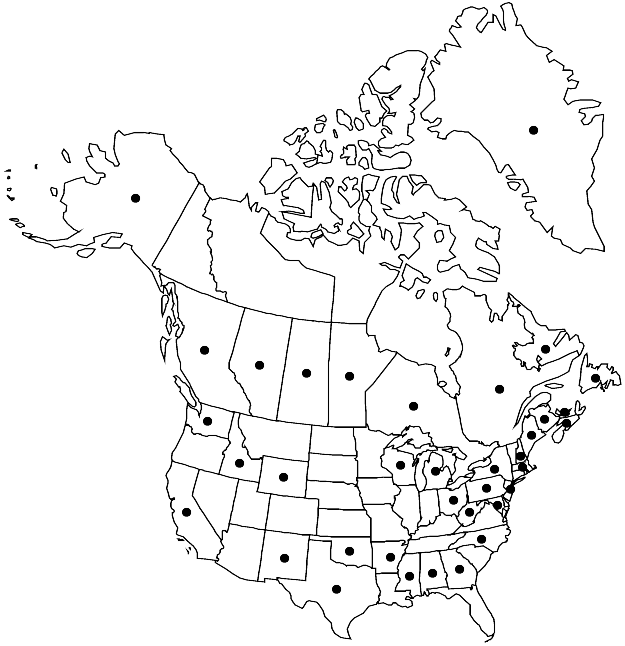Rhizomnium punctatum
Ann. Bot. Fenn. 5: 143. 1968.
Plants 1–3 (–5) cm. Stems dark red or reddish-brown when old; micronemata absent. Leaves green to light green, contorted when dry, broadly obovate or elliptic, (2–) 3–5 (–7) mm; margins pale green or reddish, 2–4-stratose; apex rounded or sometimes obtuse or truncate, short-mucronate or apiculate; costa percurrent or occasionally subpercurrent; medial laminal cells short-elongate or elongate, (50–) 65–100 (–120) µm, collenchymatous or not, walls pitted; marginal cells linear or short-linear, in 3 or 4 rows. Specialized asexual reproduction by green protonematous rhizoids. Sexual condition dioicous. Seta 1.5–3.5 cm. Capsule oblong-cylindric, 2–3.5 mm; operculum conic-rostrate; exostome greenish yellow, lamellae 18+. Spores 29–41 µm.
Phenology: Capsules mature spring.
Habitat: Forests, stream banks on logs, moist soil, humus, rock, on shaded cliffs
Elevation: low to moderate elevations
Distribution

Greenland, Alta., B.C., Man., N.B., Nfld. and Labr., N.S., Ont., P.E.I., Que., Sask., Ala., Alaska, Ark., Calif., Ga., Idaho, Maine, Md., Mass., Mich., Miss., N.H., N.J., N.Mex., N.Y., N.C., Ohio, Okla., Pa., Tex., Wash., W.Va., Wis., Wyo., Europe, Asia, Africa
Discussion
Rhizomnium punctatum is distinguished by the lack of micronemata, percurrent costa, presence of an apiculus, and thick margins.
Selected References
None.